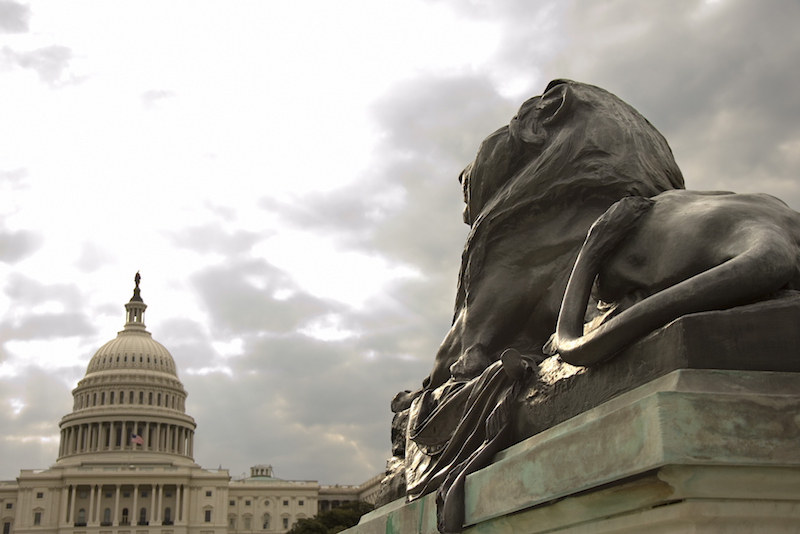
The United States needs a bipartisan push to bring transparency and accountability back into the rulemaking process.
We need to get back to the basics. The U.S. government is changing right before our eyes. Among other things, President Donald J. Trump is bypassing the statutory requirements for agency rulemaking. We must act to preserve the system that has served the nation so well thus far. We must do more to hold federal agencies to the requirements of the Administrative Procedure Act (APA), while also taking care not to overburden these agencies.
To understand how rulemaking has changed in recent years, it helps to look back further in time. A hundred years ago, few federal administrative agencies existed. The U.S. Constitution did not say much about them, which was fine because the few existing agencies did not do much that affected people’s everyday lives.
But by the 1930s, President Franklin Roosevelt’s New Deal had given birth to many new federal agencies. Along with these agencies came the question of how to control them. Around that time, some government agencies in Europe were becoming tools of fascist autocrats, and many people in the United States feared that President Roosevelt might follow the same road.
The American Bar Association (ABA) took the lead in promoting administrative reform. The ABA started work immediately after President Roosevelt’s inauguration. Its efforts gained steam in Congress in 1937, when, after the Roosevelt Administration had suffered a number of judicial setbacks, the U.S. Supreme Court began approving New Deal programs. World War II brought with it even more growth in the federal bureaucracy. Although Congress’s efforts were focused elsewhere during the war, the ABA kept working on administrative reform. Two weeks after D-Day, the ABA’s draft of the APA was submitted in Congress. It passed unanimously, and President Harry Truman signed it in 1946.
The APA contained many controversial elements and compromises. But there was very little controversy about the provisions governing agency rulemaking—the procedures agencies must follow when implementing their statutory obligations in rules. Under the APA, agencies must go through what is now known as “notice-and-comment” or “informal” rulemaking.
Under the APA, the agency must publish a notice that it proposes to issue a rule. This notice states the authority for the rule and “either the terms or substance or description of the subjects and issues involved.” The agency must then accept written comments from the public, a process that may include holding an oral hearing. The agency must consider “all relevant matter presented” and publish its final rule along with a “concise general statement of the rule’s basis and purpose.”
That is it. Just the basics: notice, comment, and final rule.
The APA is short and employs broad language because that was the only way the factions in Congress and the Roosevelt and Truman Administrations could compromise and pass a bill. Congress also left a lot to agency discretion because, at least to some extent, it trusted agencies. If that trust turned out to be misplaced or if the APA needed updating for other reasons, Congress expected to amend the law itself. The APA was amended significantly in 1966 and 1976, but not since.
In addition to the APA, agencies find their rulemaking constrained by judicially created common law, executive orders, guidance from the Administrative Conference of the United States and the ABA, custom, and congressional oversight. Overall, the process has been going well. Sometimes agencies abuse the process, but those instances are outliers in an otherwise functional system.
One major problem remains, however: Rulemaking has become really difficult. Law professors refer to this as “ossification,” which literally refers to the process of bone formation. Although scholars argue about why the rulemaking process is ossifying and how much it is happening, there is little debate that rulemaking is a big pain for federal agencies.
As a result, agencies that want to make policy often turn to other means of doing so—including by issuing guidance documents, opinion letters, manuals, and handbooks. These so-called sub-regulatory policies are not legally binding, but they allow the agency to explain its position to the wider world. Unfortunately, the courts are not too fond of sub-regulatory policymaking and often fault agencies for bypassing the APA’s notice-and-comment process.
This means that agencies are stuck between a rock and a hard place. They have little policymaking agility and are unable to respond in a timely manner to changing circumstances, including the election of new political leaders. This is one reason our Presidents have turned to making policy themselves—not just setting a policy direction for the executive branch, but establishing actual policy.
Presidential involvement in the establishment of agency policy is certainly not a new phenomenon. President Bill Clinton issued many memoranda to agency heads directing their policy agendas, as did President George W. Bush and President Barack Obama.
In the Trump Administration, though, we are seeing an unprecedented level of policymaking from the top. Years ago, scholars talked about unitary executive theory, which posits that all executive power is vested in the President, with his appointees there merely to help him do his job. But President Trump’s actions demonstrate that the unitary executive is no longer a theory; it is real.
What is the problem with the President making policy? He was elected, after all. The problem is that presidential policymaking does not involve the public, and it is not transparent. The President does not hear from everyone who might be affected by his rules, so he does not have the opportunity to hone his policy in response to their suggestions and concerns. And he makes his decisions in a black box. We do not know who he meets with or speaks to in formulating his policy. Agency rulemaking, in contrast, gives interested parties a chance to participate, and it gives the public a window into the decision-making process. In short, it promotes the kind of democratic deliberation we should all want to precede government policymaking.
In the Trump Administration, however, we are also seeing an unprecedented level of agencies breaking the rules of rulemaking. Agencies are reversing policy without any meaningful opportunity for the public to participate. They are giving inadequate notice and providing for ridiculously short comment periods; then they accompany their policies with lousy explanations for their decisions.
So far, the Constitution’s system of checks and balances is working as it should. Non-profits are stepping in and filing lawsuits, and the courts are correcting the agencies where appropriate. But this is not the best way to run a ship. Lawsuits are a burden on the non-profit sector and on federal agencies. For every Justice Department lawyer defending an agency, there may be 10 more federal employees supporting the litigation. The proliferation of lawsuits also burdens the courts.
That is why congressional oversight is so important. Congress can hold formal hearings to investigate and reveal what is happening inside agencies. But it can also take informal actions to get the message across that this sort of administrative abuse is unacceptable. Members of Congress can make inquiries, to which agencies often feel obligated to respond. Even informal contact from a staffer can send a clear message to an agency. Career employees also can urge their political leadership to play by the rules. Lobbyists, law professors, and all of us citizens have a role to play too.
This is my plea: Stay vigilant. Whatever side of the aisle you are on, the precedents the Trump Administration is setting are dangerous. The lack of transparency and democratic accountability in federal policymaking constitutes exactly the kind of danger the APA—one of the grandest political compromises of the 20th Century—was designed to avoid.
Let us get back to the basics and force agencies to follow the simple rules both parties agreed to unanimously in 1946. Certainly, the APA needs updating, but we should urge members of Congress not to make rulemaking any more difficult than it already is. The rules about rulemaking that the courts, Congress, and the President have piled on top of the APA are already shifting the balance of power in our government in a way that members of the “Greatest Generation” knew to avoid. Let us preserve their legacy by getting back to the basics of rulemaking.




